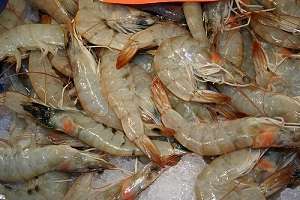Fishery bounce back informs on seagrass importance

Insights into the impact of cyclones on tiger prawn habitats in north Western Australia has demonstrated the resilience of the species, as well as underscored the importance of protecting seagrass for fisheries production and marine biodiversity.
In 1999, a team of researchers began evaluating tiger prawn (Penaeus esculentus) stock in Exmouth Gulf but later expanded their research to assess the impact of Cyclone Vance when it struck before research began.
Murdoch University's Neill Loneragan says tiger prawns are highly dependent on beds of seagrass and algae at the juvenile stage, and the destruction caused by Cyclone Vance gave them the opportunity to assess the impact on species when seagrass cover is lost.
"Our first survey was in June 1999, three months after the cyclone hit," Professor Loneragan says.
"The whole system had been devastated by Vance, there was a 40 per cent loss of mangroves, the sediment had been overturned and there was virtually no seagrass or algae present in the system.
"We recorded the cover of seagrass and algae across the eastern and southern Exmouth Gulf, in relatively shallow waters less than 5m deep.
"Seagrass is most abundant in those areas and it's also where the postlarvae and juvenile stages are found."
The cyclone caused major disruption and loss of seagrass and macroalgal beds, the critical prawn nursery habitat, and mangroves in the shallow inshore waters.
As a result, prawn landings and recruitment to the fishery were markedly lower in the two years immediately afterwards, before rising again as the cover of macrophytes increased to over 40 per cent in 2003.
"In the year [2000] the prawn catch was extremely low, it had dropped to 80 tonnes and in fact, the Department of Fisheries closed the fishery early to conserve the prawn stocks," Prof Loneragan says.
"Seagrass can take a long time to recover depending on the species, but in this case within three years it increased its cover up from around two per cent immediately after Cyclone Vance to 30–40 per cent."
Prof Loneragan says the huge loss of seagrass and macroalgae reduced the settling habitat for post-larvae and the nursery habitat for juvenile tiger prawns, which likely lead to the lower recruitment to the fishery in subsequent years.
"This study demonstrates three things. Firstly, we were quite surprised to observe the resilience of both seagrass and the prawns after suffering the impacts of the cyclone," he says.
"Secondly, it highlights the value of monitoring and adaptive management to conserve fish stocks.
"Lastly, it illustrates the importance of seagrass and macroalgae as habitats for fisheries and biodiversity."
The research, "Impact of cyclones and macrophytes on the recruitment and landings of tiger prawns, Penaeus esculentus, in Exmouth Gulf Western Australia" was recently published in Estuarine, Coastal and Shelf Science.
More information: www.sciencedirect.com/science/ … ii/S0272771413001522
Provided by Science Network WA















